Democracy is a garden that must be carefully tended, said one of our 21st century presidents. (Care to guess which one? Hint: his spouse famously broke with protocol and planted a vegetable garden near the White House. Ah, what innocent times, when defying norms meant planting vegetables!)
And now, thanks to obstructive, dysfunctional politics, gardens need to be even more carefully tended — extreme weather events push all our gardens (and farms) out of the well-studied, predictable norms that filled farmers almanacs and governed their care for decades. Observe and adapt — we are all Keynesian gardeners now. (“When the facts change, I change my mind – what do you do, sir?”)
One of the mysteries I’m trying to pierce here in the new garden at the Oregon coast is the strength of the coastal sun. Days go by without evidence of it (fine by me), and I’m told many half-shade lovers will flourish in full sun here. And since all I have is full sun at the moment, that’s where I planted Darmera peltata. And it was fine until temperatures meteorically spiked to 96F over a couple days and crisped those lush leaves. High heat, even short-lived, always seems to get the last (demonic) laugh. But with the soil still saturated, overall the heat mostly had a salutary effect. Most of the moonstruck garden dealt with the high temps as though lightly slapped in the face, to snap out of it, it’s summer!
Delicate-looking Scrophularia aquatica ‘Variegata’ sailed through the heat wave unsinged. (I attempted to grow this in the zone 10 garden way back in 2013.). This is one of those foliage plants that often gets dinged by catalogues with the descriptor “insignificant flowers.” Never fear, my garden is a safe haven for the clan of plants with insignificant flowers! I love the line the flowering stems of the variegated water figwort draw upward. Planted in early April, purchased at Hortlandia. I always plant immediately after purchase, so I know it was in the ground early April. Slothful in most other ways, I can’t abide purchased plants intended for the garden to be idling in pots — a habit developed in zone 10, when forgetting to water a potted plant for half a day could spell its end.
Along with rhodies and Japanese maples and Shasta daisies, hydrangeas are a thing here. They do really well — there are farms of them. As the keeper of the garden with insignificant flowers, I didn’t feel pressed to include hydrangeas — until this dark-leaved one showed up at the farmer’s market. Not keeping current with all things hydrangea, I did not know hybridizers were turning their attention to the leaves. And before the heat wave hit, these dark leaves were really something. In any case, it’s always good to keep some trade bait around..




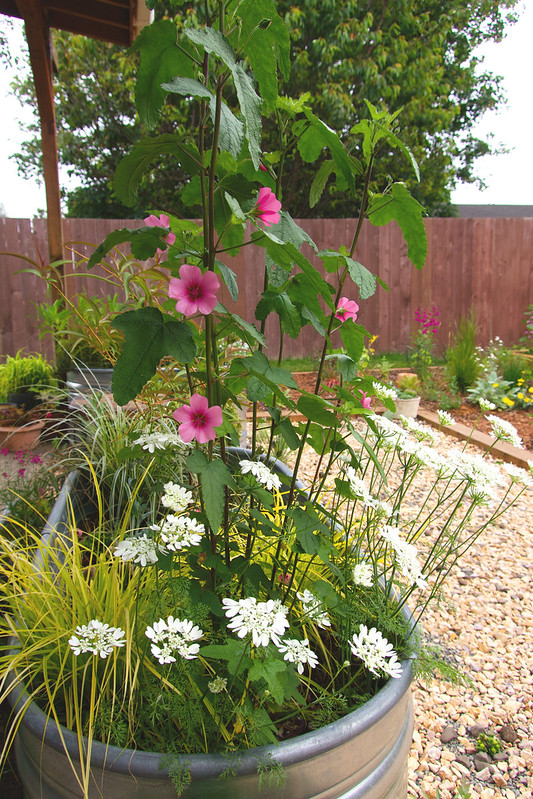
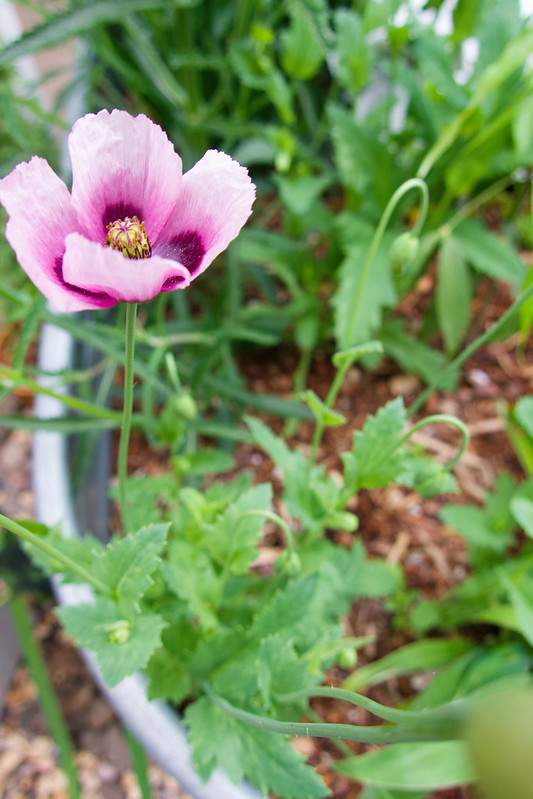

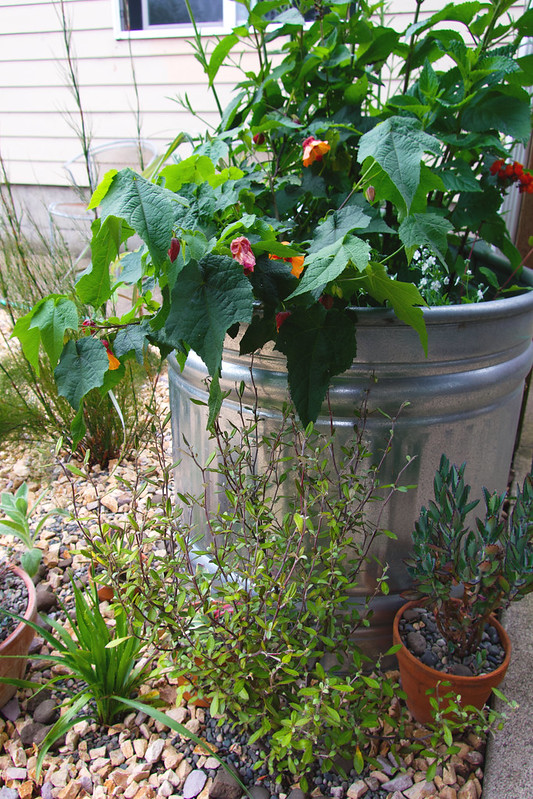
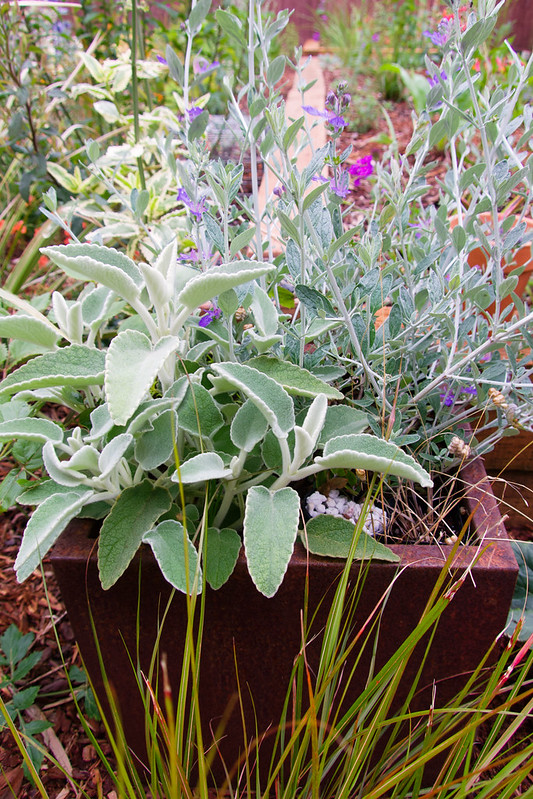

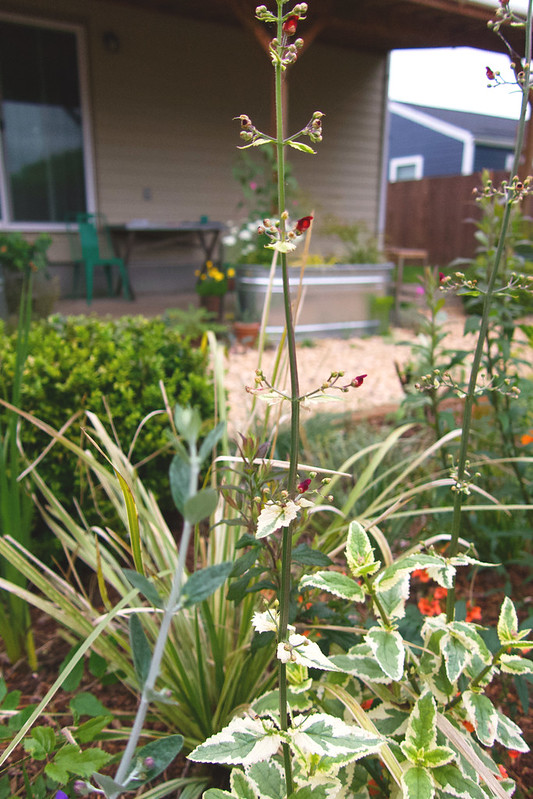

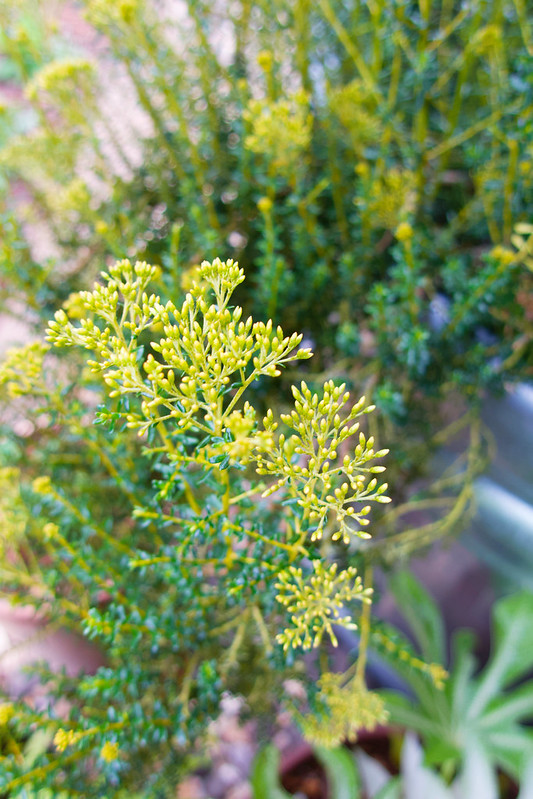

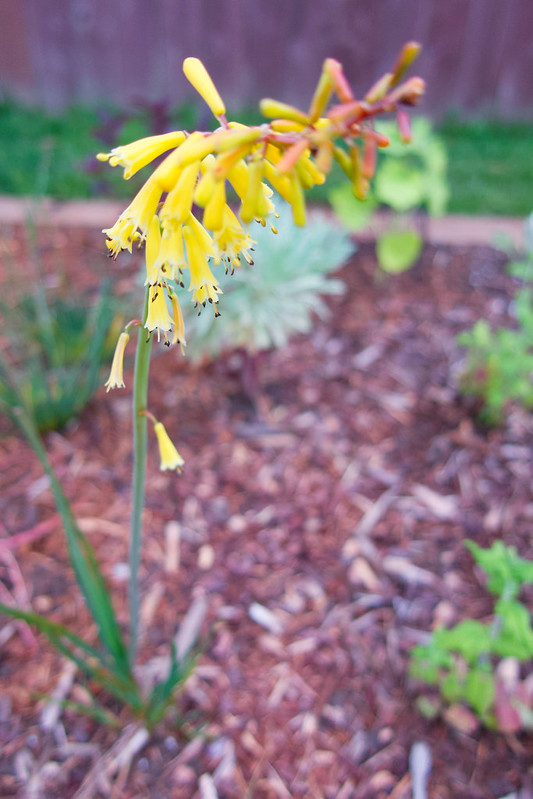

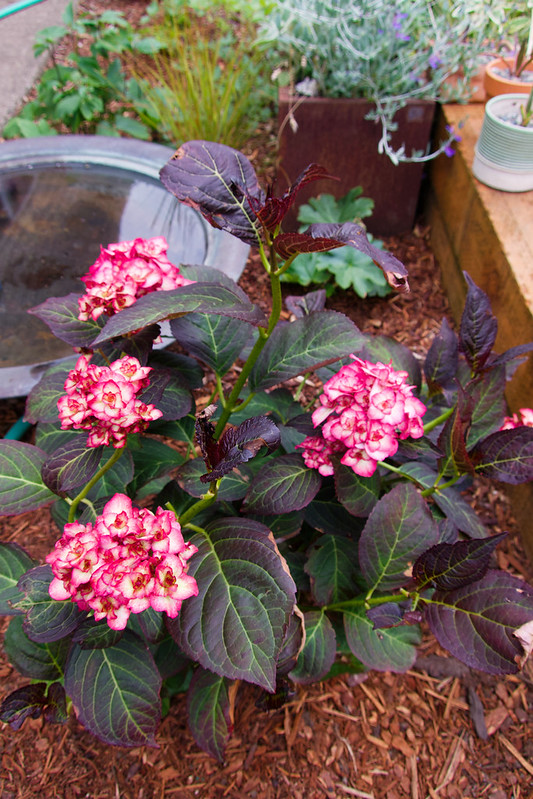
Do you feel as though you’re in the Twilight Zone’s garden, or have you already adapted to your new environment? In my zone 10b/11a garden, I’ve come to ignore most plant tags that recommend “full sun” as almost everything does better with at least partial shade, especially when the garden is SO dry. Even though we haven’s been seared by temperatures above 100F yet, I’ve already got sunburned agaves and mangaves. I’m tempted to replace my non-performing dwarf Jacaranda with a “real” tree but I expect my husband will pitch a fit about obstructing “his” view.
Gosh, I’m sad I missed that Scrophularia at Hortlandia.
Your new garden has come on quickly and is looking really great. I admire your ethic of planting immediately after purchasing. My intentions are good but rarely do I follow through (in my defense, many reasons out of my control). Hence, my porch, breezeway, and driveway are all full of plants awaiting their forever homes.
Gorgeous foliage on that hydrangea–don’t even need the flowers. And they turn color in the autumn?
I think I would go crazy trying new things in such a different climate, though whatever the climate, many plants seem much happier in the soil than in a pot.
Here our precious June-Gloom is quickly weakening–so I wish it would linger!
I must admit, I was shocked to see the hydrangea! It just doesn’t seem like a Denise plant, but I suppose it will like your cooler, cloudier at the coast, Oregon summer.
Loree, I moved the hydrangea and cut all the blooms for a vase — just looked wrong in the garden!